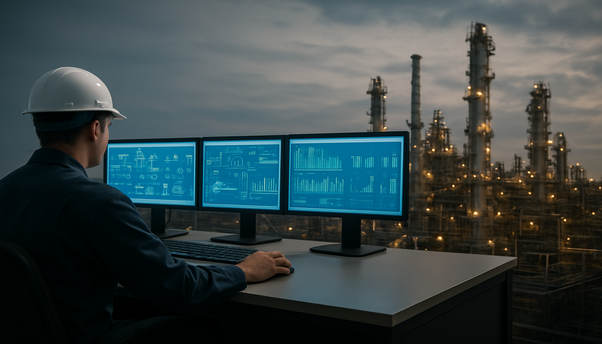Blown Film Lines: Monolayer and Multilayer Technology Shaping the Packaging Industry
The flexible packaging industry is a cornerstone of modern consumer goods. From food and beverage pouches to stand-up bags and hygiene products, these versatile solutions offer numerous benefits like lightweight design, durability, and printability. Blown film lines, Monolayer and Multilayer, play a crucial role in this industry, transforming plastic resins into high-quality films used in flexible packaging applications.
Let’s explore their evolution, capabilities and their impact over the evolving packaging landscape.
Evolution of Blown Film lines
The concept of blown film extrusion technology dates back to the 1950s. At the time, Monolayer blown film lines dominated extrusion, producing films with consistent properties. They utilize a single extruder to melt and shape a single type of plastic resin, typically polyethylene (PE) or polypropylene (PP). But with the rapid technological advancements, Multilayer blown film lines emerged in the latter half of the 20th century. These lines utilize multiple extruders (typically 2-7) to co-extrude different types of plastic resins in a single film structure.
Monolayer Blown Film Lines: Simplicity and Efficiency
Monolayer blown film lines remain a popular choice for various flexible packaging applications due to:
- Ease of operations: Relatively straightforward design of Monolayer lines, make them easier to operate and maintain.
- Cost Effectiveness: These lines typically require a lower initial investment and consume less energy during operation.
- Efficiency: They offer high production speeds for applications where consistent film properties are sufficient.
As per a recent report from Business Research Insights, the global blown film extrusion market is expected to reach USD 1341.01 million by 2031. Within this market, Monolayer lines are projected to maintain a significant share due to its cost effectiveness and suitability for a wide number of packaging manufacturers.
Rise of Multilayer Blown Film Lines

Utilizing multiple extruders (typically 3, 5, 7, 9, 11), Multilayer Blown film lines co-extrude different types of plastic resins in a single film structure. Hence, these lines offer distinct advantages for specific flexible packaging applications:
- Enhanced Barrier properties: Multilayer films possess speciality resins that act as barriers against oxygen, moisture and various other gases, further extending product shelf life.
- Improved Mechanical Strength: Resins combined with varying degrees of strength and flexibility helps achieve superior puncture resistance and tear strength.
- Lightweight Design: Compared to Monolayer films, Multilayer films can achieve the desired performance with less material.
As a per a recent report from Custom Market Insights, the Global Multilayer Blown films market was valued at USD 7.9 Billion in 2023 and is projected to reach USD 11.8 Billion by 2033. Advances in film extrusion technology have made it possible to produce thinner, lighter multilayer films that are less expensive and more environmentally friendly.
Monolayer or Multilayer films: Which one to choose?
For manufacturers, there are several factors which judge the choice between Monolayer and Multilayer blown film lines, including packaging requirements, Production costs and target markets.
- Monolayer: Cost effective solutions which is suitable for basic functionality requirements such as puncture resistance and printability.
- Multilayer: Suitable where applications require superior barrier properties and enhanced mechanical strength along with various other specialized functionalities.
Conclusion
Since the evolution of blown film lines, both Monolayer and Multilayer concepts have evolved exponentially within the flexible packaging industry. With the rapid advancements in blown film extrusion technology and machinery, the functioning and maintenance of these machines has also become cost effective and seamless.
There is an increasing focus on sustainability and innovation including the development and integration of Bio-based and recycled resins. Moreover, Advanced automation and new process control techniques is also leading to optimize production processes.
INGSOL offers a range of solutions to optimize your blown film lines including retrofits & drive upgrades, spare parts & consumables, die head cleaning, Annual Maintenance Contract (AMC) for machines and more. We also provide a number of remote services including Remote Technical support & consulting solutions.
Connect with our experts today!
References –
https://petro-pack.com/article/differences-between-multi-layer-and-one-layer-mono-polyethylene-film/
https://www.plastar-machine.com/en/article/what-is-mono-layer-blown-film-extrusion-machine.html
https://www.marketresearchintellect.com/product/monolayer-blown-film-extrusion-machine-market/
https://www.businessresearchinsights.com/market-reports/blown-film-extrusion-lines-market-101244



